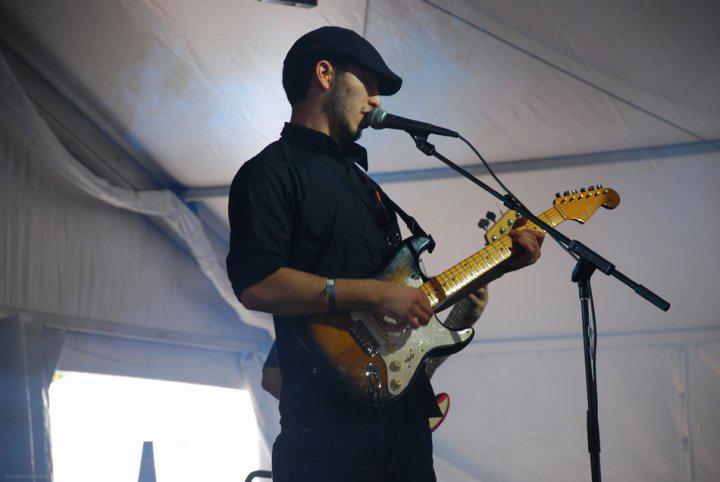Find Your Way: How to Spice Up a Cover Song

Whether it be for a video or live, many bands perform covers of artists they admire as a way to pay homage or share their love of a song with the audience.
Sometimes the band chooses to play it exactly like the record, and if it's a tricky song it's all the more impressive. If I saw a random bar band flawlessly pull off Joe Satriani's “Satch Boogie” or any Periphery song note for note, I'd be blown away.
Other times it's a cover of something simpler like Bob Dylan's “Don't Think Twice It's Alright,” or in this case, “Find My Way” by Nine Inch Nails. It's easier and more exciting for the band to put their unique twist on the song and try to make it their own by using different techniques and textures.
Here's a guide as to how we made a cover song a band and fan favorite.
First, it's important to check if there are other versions of the song out there. Trent Reznor included remixes with the album, so we decided to start the song with the chord used on the "Oneohtrix Point Never Remix." That's about the only similarity, but it's still a shout-out to that version. We make that section our own by having electronic drums come in and having a “turnaround,” per se, as a way to end the section.
Then here comes guitar! I wanted the guitar pattern to mimic the drums in the original song. It's tough to make a guitar part percussive with alternate picking, especially if you're not playing loud. A way I found to achieve that is courtesy of Tosin Abasi of Animals As Leaders, who uses a double-thumbing technique. I imagine seeing him play is similar to seeing Eddie Van Halen use tapping for the first time.
Using that technique, I was able to make a part that was a bit more bouncy while outlining the E major chord. As the chorus returns, everyone in the band does as well and for the rest of the song, although still not at 100 percent volume yet.
All the latest guitar news, interviews, lessons, reviews, deals and more, direct to your inbox!
In the final verse, the bass uses a unique tapping lick, as the guitar line is already keeping a thumping pulse. This is why it's important to be a bit curious about the various techniques of guitar playing. Because although they may not necessarily come up in a cover band setting, they can really make a cover song very creative and unique. The more you have to work with, the better.
In the final chorus, we go from electronic drums to real drums, and that's when the song gets to 100 percent. That's a definition of a slow burn and a wonderful payoff for the band and the audience.
Watch/see it here:
Elliott Klein is a New York City-based guitarist/singer/songwriter who plays in Bright and Loud, Party Lights and many more.
